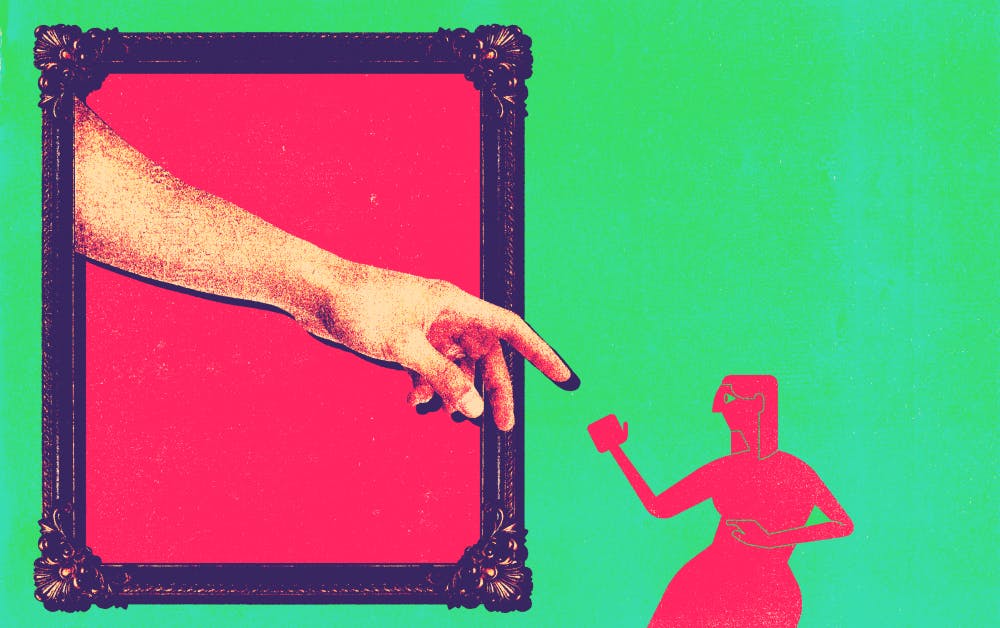The #MeToo movement has brought to light countless examples of sexual misconduct, from when it was founded in 2006 to when it went viral on Twitter in 2017.
But as ASU students in a women’s history class explored in-depth this semester, acts of sexual violence toward women are not a new phenomenon at all and date way back before the Harvey Weinstein scandal gripped headlines.
For the first time, Pamela Stewart’s course on Women in U.S. History is putting together an art exhibit. The inaugural event ASU’s Downtown Phoenix campus will showcase the prevalence and deep-rooted history of sexual violence toward women.
The exhibit, titled Long Before #MeToo: An Arts-Based Exhibit Revealing A Difficult History, features students who in large part are not pursuing an arts degree, but rather are students from a diverse group of majors.
Stewart, a senior lecturer in the College of Integrative Sciences and Arts, said that although her class is not an art class, “to some of them, it was the art part that kind of spurred their attention, but getting the history is potentially what’s more complicated.”
She said the main goal of the project was to show how far back the issue of sexual violence has occurred throughout history.
“What I see missing a lot of times in the conversation and the analysis is, what’s the backdrop? What’s the history?” Stewart said. “I think that it’s useful to at least be aware of or ask questions about the past in order to solve problems that are in the present as well.”
The exhibit was a seed grant project from ASU’s CounterAct initiative, which is a program housed in the Herberger Institute for Design and the Arts. The grants are given to students, staff and faculty who wish to participate in the initiative’s goal of producing art to counteract sexual violence.
Elizabeth Johnson, creative co-director of CounterAct, said the initiative is currently working on providing grants along with producing its own artwork to combat the number of sexual assaults that happen in the U.S. daily, which she said is roughly 880 times a day.
“I feel like the arts help engage all people’s capacities," Johnson said. "(Through) their art, their minds, their imagination and ... then centering a space for imagination, we are able to work together to help address the cultural problem with a cultural solution.”
She said she and CounterAct’s other co-director, Nik Zaleski, have checked in with Stewart’s class project during the creative process.
Johnson said she was impressed with how "beautifully" the class was able to bring together arts and academic research.
“It’s been incredibly inspiring to see grants go to projects and things that I could never even imagine, (and) that people have created with this call to action for how we collectively work together to counteract sexual violence on an individual, community and national level,” she said.
Rebecca Spiess, a senior studying journalism, is a former student of Stewart and has worked closely with the students taking the course as they have completed the semester-long project.
“What struck me from talking to all the students was the diversity of the subject matter and the way that students were tackling the project,” Spiess said. “Just the breadth of the different projects was really impressive.”
She said she believes the exhibit will be successful “to remind the general public of where we’ve been and where we are now and the things that are still left to improve.”
Stewart said her goal for her students is for them to step out of their comfort zones and produce something that tackles a larger societal issue.
She said she hopes her students have found that the project has become something larger than just the course itself, and that they will be encouraged to continue addressing important problems and evoking change.
“Some of (the students) were just appalled at some of the really troublesome history that goes so much further back than Weinstein,” Stewart said. “Once they voted on the title, the ‘Long Before #MeToo: An Arts-Based Exhibit Revealing A Difficult History’ they seemed to kind of latch on to what this was about, and more people have too.”
The exhibit will be on display from 12 p.m. to 1 p.m. on April 23 in the San Carlos Room at the Student Center @ the Post Office.
Reach the reporter at erfontan@asu.edu or follow @EndiaxRain on Twitter.
Like The State Press on Facebook and follow @statepress on Twitter.




